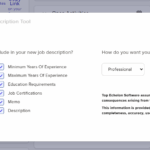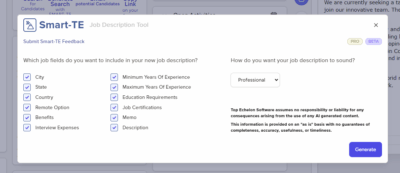Human Resources (HR) is a critical function in every organization, regardless of industry or size. HR is responsible for managing an organization’s most valuable asset, its workforce. Over the years, the field of HR has evolved, and different types of HR have emerged. Two primary types of HR are corporate HR and industrial HR.
What is corporate HR?
Corporate HR is focused on managing the human resources within a company or organization. This includes a wide range of functions such as recruitment, employee engagement, performance management, compensation, and benefits administration. Corporate HR professionals work closely with senior leadership to develop and implement HR policies and strategies that align with the company’s goals and objectives. Their primary goal is to create a positive and productive work environment that supports the success of the organization.
What is industrial HR?
On the other hand, industrial HR is primarily concerned with managing the human resources within a manufacturing or industrial setting. This includes functions such as talent acquisition, workforce planning, safety and health management, and labor relations. Industrial HR professionals work closely with plant managers and supervisors to ensure that the workforce is properly trained, motivated, and equipped to meet production goals. Their primary goal is to ensure that the workforce is safe, efficient, and effective in producing goods and services.
While these two types of HR share some similarities, they also have significant differences. Let’s dive into those differences, shall we?
Corporate HR setting vs. industrial HR setting
The corporate HR function in a corporate setting is responsible for managing and supporting the organization’s human capital, which includes employees, contractors, and temporary workers. The corporate HR function plays a crucial role in ensuring that the organization has the right people in the right roles, and that employees are engaged, motivated, and productive.
In addition, the corporate HR function is responsible for a range of tasks, including recruitment and hiring, onboarding and training, performance management, compensation and benefits, employee relations, and compliance with labor laws and regulations. HR professionals work closely with hiring managers and executives to understand the organization’s talent needs and develop strategies to attract, retain, and develop top talent.
One of the key responsibilities of the corporate HR function is to develop and implement policies and procedures that support the organization’s goals and objectives. HR professionals work to ensure that the organization’s policies are fair, consistent, and compliant with labor laws and regulations.
Another important function of the corporate HR function is to support employee development and growth. HR professionals work to identify training and development needs, and provide opportunities for employees to acquire new skills and knowledge. This can include on-the-job training, coaching, mentoring, and formal training programs.
The corporate HR function also plays a critical role in managing employee relations and ensuring that the organization maintains a positive work environment. HR professionals work to address employee concerns, resolve conflicts, and promote open communication and collaboration among employees.
In conclusion, the corporate HR function in a corporate setting is responsible for managing and supporting the organization’s human capital. HR professionals work to attract, retain, and develop top talent, develop policies and procedures that support the organization’s goals and objectives, and promote a positive work environment. The corporate HR function plays a crucial role in the success of the organization by ensuring that the right people are in the right roles, and that employees are engaged, motivated, and productive.
The HR function in the industrial setting
On the other hand, industrial HR refers to the HR function in an industrial setting.
The industrial HR function in an industrial setting is responsible for managing the organization’s human capital in industries such as manufacturing, construction, and mining. The industrial HR function plays a critical role in ensuring that the organization has the right people in the right roles, and that employees are engaged, motivated, and productive.
In addition, the industrial HR function is responsible for a range of tasks, including recruitment and hiring, safety and health management, training and development, performance management, compensation and benefits, and compliance with labor laws and regulations. HR professionals work closely with line managers and safety professionals to understand the organization’s talent and safety needs and develop strategies to attract, retain, and develop top talent while ensuring employee safety.
One of the key responsibilities of the industrial HR function is to develop and implement safety policies and procedures that support the organization’s goals and objectives. HR professionals work to ensure that the organization’s safety policies are fair, consistent, and compliant with safety laws and regulations.
Another important function of the industrial HR function is to support employee development and growth while ensuring employee safety. HR professionals work to identify training and development needs, and provide opportunities for employees to acquire new skills and knowledge that are aligned with the safety culture of the organization.
The industrial HR function also plays a critical role in managing employee relations and ensuring that the organization maintains a positive safety and work environment. HR professionals work to address safety and employee concerns, resolve conflicts, and promote open communication and collaboration among employees.
The industrial HR function in an industrial setting is responsible for managing the organization’s human capital while ensuring safety. HR professionals work to attract, retain, and develop top talent while ensuring safety, develop safety policies and procedures that support the organization’s goals and objectives, and promote a positive safety and work environment. The industrial HR function plays a critical role in the success of the organization by ensuring that the right people are in the right roles, and that employees are engaged, motivated, and productive while ensuring safety.
People-centric vs. task-centric
One of the significant differences between corporate HR and industrial HR is their approach to employee management. Corporate HR has a people-centric approach to employee management.
Corporate HR’s people-centric approach to employee management focuses on developing and maintaining a positive work environment that values employees as the organization’s most important asset. Corporate HR professionals work to create a workplace culture that promotes employee engagement, open communication, and collaboration.
One of the key principles of the people-centric approach is to view employees as partners in the organization’s success. This approach recognizes that employees are not just resources to be managed, but individuals with unique needs, desires, and aspirations. HR professionals work to understand employees’ needs and provide them with the necessary resources and support to succeed in their roles.
Another important aspect of the people-centric approach is to focus on employee well-being. HR professionals work to promote employee health and wellness by providing access to health and wellness programs, promoting work-life balance, and creating a safe and supportive work environment. This approach recognizes that happy, healthy employees are more productive and engaged, leading to better business outcomes.
The people-centric approach also places a strong emphasis on employee development and career growth. HR professionals work to provide employees with opportunities for professional development, training, and mentorship, helping them acquire new skills and knowledge that benefit both the employee and the organization.
Furthermore, the people-centric approach recognizes that employees’ diverse backgrounds and experiences contribute to the organization’s success. HR professionals work to promote diversity, equity, and inclusion in the workplace, creating an environment where employees feel valued and supported, regardless of their background or identity.
Corporate HR’s people-centric approach to employee management prioritizes employees’ well-being, career growth, and diversity, recognizing that employees are the organization’s most valuable asset. HR professionals work to create a positive work environment that promotes employee engagement, communication, and collaboration, resulting in better business outcomes and a more successful organization.
The task-centric approach to employee management
Industrial HR, on the other hand, has a task-centric approach to employee management.
Industrial HR refers to the HR practices and policies that emerged during the Industrial Revolution, where the focus was on managing large groups of employees in manufacturing settings. This approach to HR management is primarily task-centric, where the primary objective is to maximize productivity and efficiency in the workplace.
The task-centric approach to employee management in industrial HR is centered on assigning specific tasks to employees and ensuring they complete them within a specified timeline. It involves monitoring the performance of employees and providing feedback on their work, primarily focusing on their output rather than their individual development. This approach assumes that employees are interchangeable and their primary function is to carry out tasks assigned to them by management.
In an industrial HR environment, employees are typically treated as resources to be managed, rather than as individuals with unique needs and aspirations. The focus is on maintaining a highly productive workforce, with little regard for the well-being or personal growth of individual employees. As a result, employees often experience a high degree of stress and burnout, as they are expected to work long hours and meet stringent performance targets.
One of the primary challenges of the task-centric approach to employee management is that it can lead to a lack of employee engagement and motivation. Employees who feel that they are just a cog in the machine and that their individual contributions are not valued or recognized are less likely to be motivated to perform at their best. Furthermore, this approach often fails to account for the impact of non-work-related factors, such as family responsibilities or mental health issues, on employee performance.
While the task-centric approach to employee management may have been suitable for the industrial era, it is no longer an effective strategy for managing today’s workforce. Companies must adopt a more human-centric approach to HR management, where the focus is on developing and supporting employees as individuals, rather than just resources to be managed. This will result in a more engaged and motivated workforce that is better equipped to meet the challenges of today’s rapidly changing business environment.
Corporate HR vs. industrial HR: recruitment strategies
Another difference between corporate HR and industrial HR is their recruitment strategies. Corporate HR has a more extensive recruitment strategy, focusing on recruiting employees with the right skills and experience to meet the company’s needs.
Corporate HR refers to the HR practices and policies that are designed to support the overall goals and objectives of the organization. One of the most critical areas of corporate HR is recruitment, which involves attracting and selecting the best candidates for available job positions within the organization.
Corporate HR’s recruitment strategy typically starts with an analysis of the organization’s staffing needs, including the identification of critical skills, competencies, and qualifications required for each job position. This analysis helps to develop job descriptions and job specifications that outline the required knowledge, skills, and abilities (KSAs) for each job.
Once the job descriptions and specifications are finalized, the recruitment process begins. Corporate HR may use various recruitment channels, including job postings on the organization’s website, job boards, social media platforms, and professional networks. In addition, the organization may also use recruitment agencies or headhunters to identify and attract candidates with specific skills and experiences.
After receiving applications, the recruitment team screens the resumes and applications to identify the most suitable candidates for each position. This is typically followed by a series of interviews and assessments, such as skills tests and personality assessments, to evaluate the candidates’ KSAs and determine their suitability for the job.
Once the interviews and assessments are completed, the recruitment team may provide a recommendation to the hiring manager on the best candidate for the position. The hiring manager makes the final decision on the candidate selection and extends a job offer.
Corporate HR’s recruitment strategy is critical to the success of the organization. A well-planned and executed recruitment strategy can attract the best talent, enhance the organization’s reputation as an employer, and ultimately contribute to the organization’s success. By ensuring that the recruitment process is fair, transparent, and efficient, corporate HR can attract the most qualified candidates and ensure that the organization has a strong workforce to achieve its goals and objectives.
The role of recruitment agencies and job fairs
Industrial HR, on the other hand, has a more limited recruitment strategy, often relying on recruitment agencies or job fairs.
Industrial HR, also known as traditional or old-school HR, is a discipline of HR management that emerged during the industrial revolution, when organizations were primarily focused on increasing productivity and efficiency. The recruitment strategy of industrial HR often involves the use of recruitment agencies and job fairs to attract potential candidates.
Recruitment agencies are third-party firms that specialize in identifying and attracting potential candidates for job positions. They work on behalf of the organization to identify and screen candidates, conduct interviews and assessments, and provide a shortlist of qualified candidates to the organization. Recruitment agencies are often used by industrial HR because they can quickly identify and attract potential candidates, saving time and resources for the organization.
Job fairs are events where employers set up booths to showcase their company and the available job positions. These events provide an opportunity for organizations to meet potential candidates face-to-face and discuss job opportunities. Job fairs are often held in partnership with educational institutions, industry associations, or government agencies, and are an effective way for industrial HR to attract potential candidates from a specific industry or sector.
While recruitment agencies and job fairs are effective strategies for attracting potential candidates, they may not always result in finding the best fit for the organization. Industrial HR may find it challenging to attract candidates who are looking for a work-life balance, job security, and personal growth opportunities, as these factors may not be a priority for the organization.
Recruitment agencies and job fairs are effective recruitment strategies for industrial HR. However, they may not always result in finding the best fit for the organization. To attract and retain the best talent, industrial HR must adopt a more human-centric approach to HR management that considers employees’ unique needs and aspirations, such as work-life balance, job security, and personal growth opportunities.
Corporate HR vs. industrial HR: talent management
The role of HR in talent management also differs between corporate HR and industrial HR. Corporate HR focuses on attracting and retaining top talent.
Corporate HR plays a critical role in talent management, which involves identifying, attracting, developing, and retaining top talent within the organization. Attracting and retaining top talent is crucial for an organization’s success, as it ensures that the organization has the skills and expertise needed to achieve its goals and objectives.
The role of corporate HR in attracting top talent starts with creating a strong employer brand that reflects the organization’s culture, values, and mission. Corporate HR should also use various recruitment channels, such as social media, job boards, and employee referrals, to attract top talent. Additionally, the recruitment process should be fair, transparent, and efficient to ensure that top talent is not lost to competitors.
Once top talent is attracted, corporate HR should focus on developing and retaining them within the organization. This can be achieved through various talent management strategies, such as offering competitive compensation and benefits packages, providing opportunities for career advancement, and creating a positive work culture that fosters employee engagement and satisfaction.
Corporate HR should also invest in employee development programs, such as training, mentoring, and coaching, to help top talent grow and develop their skills and competencies. This not only enhances the organization’s talent pool but also creates a sense of loyalty and commitment among top talent, reducing the likelihood of them leaving the organization.
In addition, corporate HR should regularly measure and evaluate employee engagement and satisfaction levels to identify areas where improvement is needed. This can be achieved through employee surveys, focus groups, and other feedback mechanisms, which provide valuable insights into employee perceptions and experiences.
Corporate HR plays a vital role in talent management, specifically attracting and retaining top talent. By creating a strong employer brand, using various recruitment channels, investing in employee development, and fostering a positive work culture, corporate HR can attract and retain the best talent, ensuring that the organization has the skills and expertise needed to achieve its goals and objectives.
Managing a workforce with diverse skill sets
Industrial HR plays a critical role in managing a workforce with diverse skill sets. In an industrial setting, employees often have different skills and competencies, depending on their job roles and responsibilities. Managing this diversity requires a strategic approach to talent management that addresses the unique needs and challenges of each employee.
The role of industrial HR in managing a diverse workforce starts with identifying the skills and competencies needed for each job role. This involves conducting job analysis, identifying the essential job duties and tasks, and determining the knowledge, skills, and abilities required for each job. Industrial HR should also identify the training and development needs of each employee and provide them with the necessary resources to develop their skills and competencies.
Additionally, industrial HR should foster a culture of inclusion and diversity within the organization. This involves creating a workplace where all employees feel valued and respected, regardless of their background or skill set. Industrial HR should also provide opportunities for employees to share their perspectives and ideas, promoting a sense of belonging and engagement within the workforce.
Industrial HR should also use performance management systems to track and evaluate employee performance. This involves setting clear performance objectives, providing regular feedback, and recognizing and rewarding employees who meet or exceed performance expectations. Performance management systems also provide valuable data on employee performance, which can be used to identify areas where additional training and development are needed.
Finally, industrial HR should foster a learning and development culture within the organization. This involves providing employees with ongoing training and development opportunities that help them acquire new skills and competencies. This not only enhances the organization’s talent pool but also creates a sense of loyalty and commitment among employees, reducing the likelihood of them leaving the organization.
Managing a workforce with diverse skill sets requires a strategic approach to talent management that addresses the unique needs and challenges of each employee. By identifying the skills and competencies needed for each job role, fostering a culture of inclusion and diversity, using performance management systems, and fostering a learning and development culture, industrial HR can effectively manage a diverse workforce and enhance the organization’s talent pool.
Employee benefits and compensation
Employee benefits and compensation is another area where corporate HR and industrial HR differ. Corporate HR is responsible for managing employee benefits and compensation packages.
Corporate HR plays a critical role in managing employee benefits and compensation packages. Employee benefits and compensation packages are an essential part of an organization’s overall employee value proposition, which can help attract and retain top talent.
Corporate HR is responsible for designing and administering employee benefits and compensation packages that are fair, competitive, and aligned with the organization’s overall strategy and objectives. This involves developing a deep understanding of the organization’s business goals, workforce demographics, and industry benchmarks.
Employee benefits typically include health insurance, retirement plans, paid time off, and other perks such as gym memberships, flexible work arrangements, and employee discounts. Corporate HR is responsible for selecting the right benefit providers, negotiating competitive rates, and ensuring that employees have access to the benefits they need.
Compensation packages typically include base salary, bonuses, equity awards, and other forms of pay such as commissions and profit-sharing. Corporate HR is responsible for setting compensation levels that are competitive with the market and aligned with the organization’s overall compensation philosophy. This involves analyzing salary surveys, benchmarking against competitors, and developing compensation plans that incentivize employees to achieve their goals.
Corporate HR should also ensure that employee benefits and compensation packages are communicated effectively to employees. This involves creating clear and concise communication materials that explain the benefits and compensation programs, their value, and how employees can take advantage of them.
Finally, corporate HR should regularly evaluate the effectiveness of employee benefits and compensation packages. This involves analyzing employee feedback, benchmarking against competitors, and making adjustments to ensure that the packages remain competitive and aligned with the organization’s overall strategy and objectives.
Corporate HR plays a critical role in managing employee benefits and compensation packages. By designing and administering fair and competitive packages, communicating their value effectively to employees, and regularly evaluating their effectiveness, corporate HR can attract and retain top talent, enhancing the organization’s overall employee value proposition.
A straightforward approach to benefits and compensation
Industrial HR’s straightforward approach to employee benefits and compensation reflects its traditional and practical approach to human resource management. In an industrial setting, the focus is on providing competitive compensation and benefits packages that are consistent with the market and reflect the value of the employees’ contributions to the organization.
The compensation packages in industrial HR typically include a base salary that is determined by the job duties, experience, and market rates. The salary may be supplemented by bonuses or incentives based on individual performance or the performance of the organization as a whole. These bonuses are often tied to specific goals or objectives and are communicated clearly to employees to help motivate and engage them.
Similarly, the employee benefits packages offered by industrial HR are often straightforward and designed to meet the basic needs of employees. These may include health insurance, retirement plans, paid time off, and other benefits that are commonly provided in the industry. Industrial HR typically negotiates these benefits packages with providers to secure the best rates and ensure that employees have access to quality benefits.
One advantage of industrial HR’s straightforward approach to employee benefits and compensation is that it is easy to understand and implement. Employees are provided with clear information about their compensation and benefits packages, making it easier for them to evaluate their total compensation and make informed decisions about their employment.
However, a potential disadvantage of this straightforward approach is that it may not always reflect the diverse needs and preferences of employees. For example, some employees may value flexibility or work-life balance more than a high salary or comprehensive benefits package. Industrial HR may need to consider alternative approaches to employee benefits and compensation that meet the needs of a diverse workforce.
Industrial HR’s straightforward approach to employee benefits and compensation reflects its practical and traditional approach to human resource management. While this approach has its advantages in terms of simplicity and consistency, it may also need to evolve to reflect the diverse needs and preferences of the modern workforce.
How corporate HR and industrial HR deal with unions
One of the significant challenges that industrial HR faces is managing unionized employees.
Managing unionized employees is a complex and important responsibility for industrial HR. Unions are organizations that represent workers and negotiate with employers on their behalf, often on issues related to pay, benefits, working conditions, and job security. In an industrial setting, where many workers are unionized, HR must understand the laws and regulations that govern labor relations and develop effective strategies for managing unionized employees.
Industrial HR must understand the collective bargaining agreement (CBA) negotiated between the union and the employer. This agreement outlines the terms and conditions of employment, including wages, benefits, hours of work, and working conditions. HR must ensure that the employer complies with the CBA and that any changes to the agreement are negotiated and approved by the union.
HR must also develop effective communication strategies to maintain positive relations with the union and the workers it represents. This includes providing information to union leaders and members on issues related to human resources, such as benefits, compensation, and job postings. HR must also develop effective channels of communication to manage grievances and disputes, which can arise when workers feel their rights have been violated or the CBA has been breached.
HR must also be prepared to negotiate with the union on behalf of the employer. This may involve bargaining over wages, benefits, and working conditions, as well as addressing any disputes that arise. Effective negotiation skills, coupled with an understanding of the legal and regulatory framework that governs labor relations, are critical to successfully managing unionized employees.
Finally, industrial HR must ensure that its policies and practices are consistent with both the CBA and the laws and regulations that govern labor relations. This includes developing policies related to disciplinary action, termination, and layoffs that comply with the CBA and relevant labor laws.
Managing unionized employees is a complex and important responsibility for industrial HR. Effective management of labor relations requires an understanding of the CBA, effective communication skills, negotiation skills, and compliance with labor laws and regulations. HR must develop strategies that balance the needs of the employer with the needs and rights of the workers represented by the union.
Corporate HR rarely deals with unions
Corporate HR rarely has to deal with unionized workers because most corporations operate in industries that are not traditionally unionized. This is because unions tend to be more prevalent in industries such as manufacturing, construction, transportation, and public services, where workers have historically had less bargaining power and have faced greater risks to their health and safety.
In contrast, many corporate jobs are office-based and involve professional or technical skills, which are in high demand and can be more easily replaced. This gives employers greater leverage in negotiating with workers and reduces the likelihood that employees will seek to unionize. Furthermore, corporate jobs typically offer higher wages and better benefits than unionized jobs, making it less likely that workers will seek union representation.
However, even in industries where unions are less prevalent, corporate HR may still need to deal with labor relations issues. For example, corporate HR may need to negotiate with employees or employee groups over issues such as wages, benefits, and working conditions. Additionally, corporate HR may need to address issues related to employee morale, motivation, and engagement, which can be affected by factors such as work-life balance, career development, and recognition.
In such cases, corporate HR may need to develop effective communication and negotiation strategies to ensure that the needs of employees are met while also supporting the goals and objectives of the organization. HR may also need to work closely with other departments, such as legal or finance, to ensure that any decisions made are consistent with relevant laws and regulations.
Corporate HR and industrial HR are two distinct fields within the HR profession, each with its own focus, goals, and challenges. While both are concerned with managing human resources, corporate HR places a greater emphasis on creating a positive work culture and engaging employees in the success of the organization, while industrial HR is more focused on managing the workforce in a manufacturing or industrial setting and ensuring that employees are properly trained and equipped to meet production goals.








